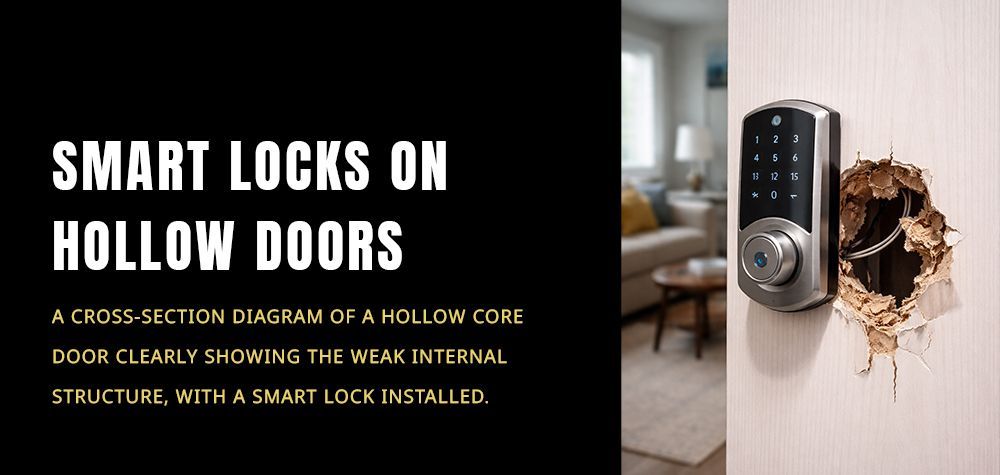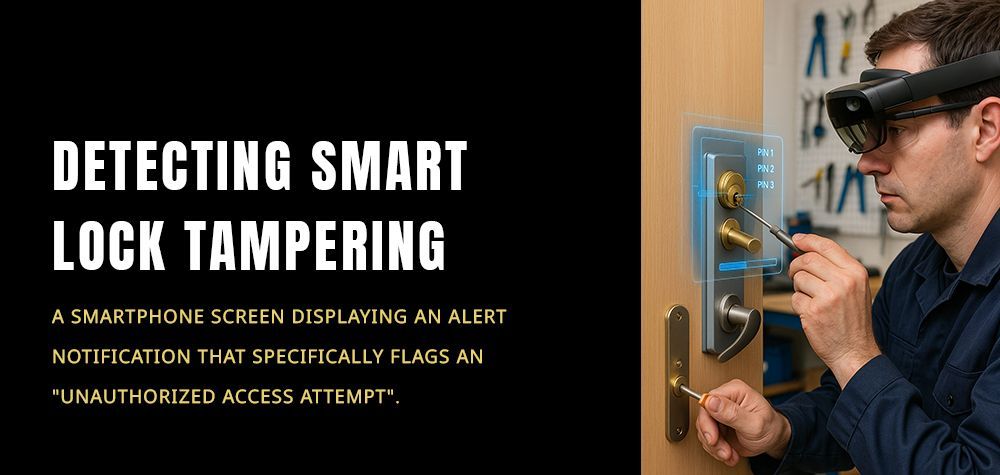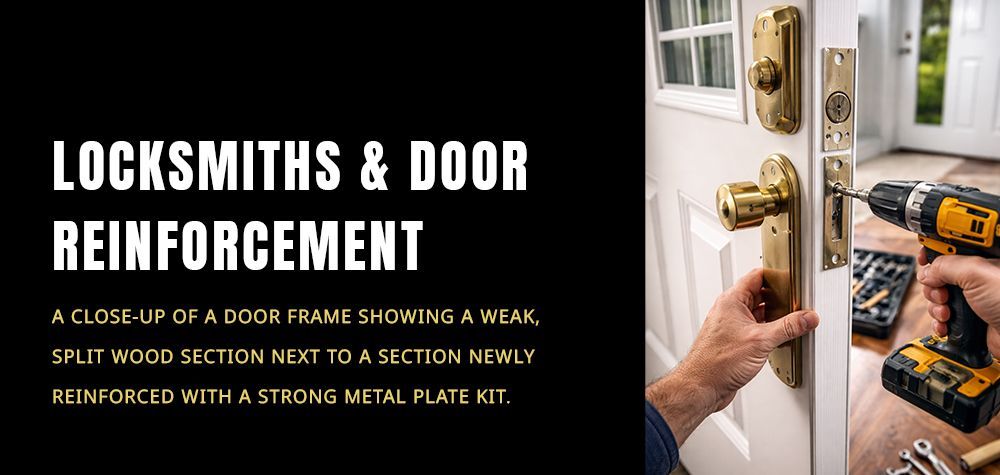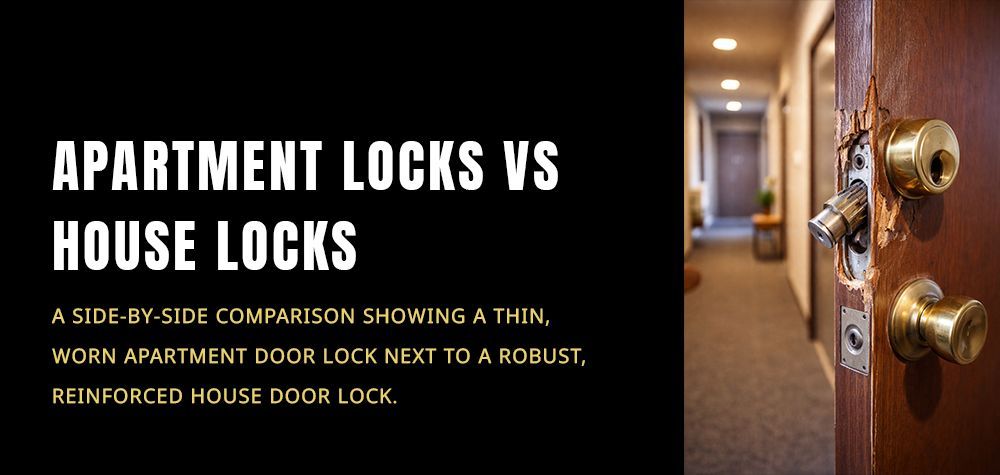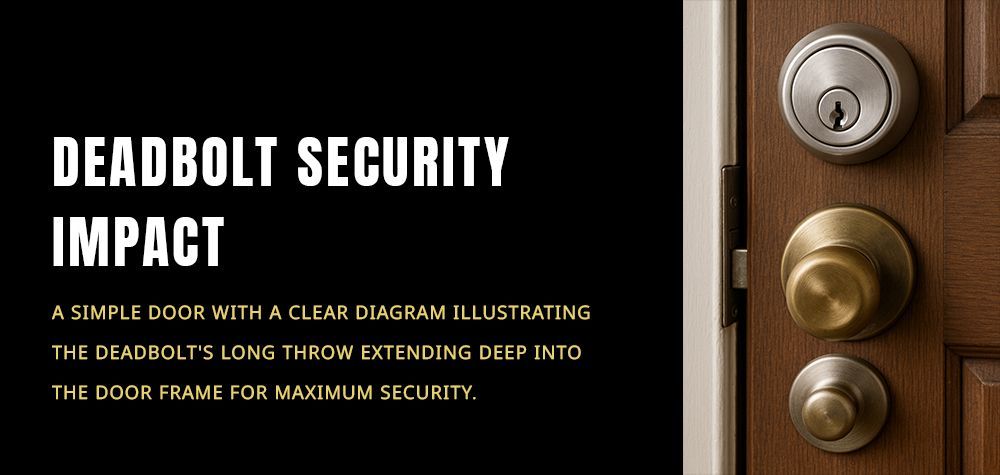How to Integrate Locks with Home Automation Systems
In the age of smart homes, security has become just as intelligent as convenience. Smart locks are now at the center of home automation — giving you the ability to lock, unlock, and monitor your doors from anywhere in the world. But what truly sets them apart is how seamlessly they integrate with other smart home devices.
Whether you’re looking to sync your locks with voice assistants, lighting systems, or security cameras, understanding how to integrate locks with home automation systems can elevate both your home’s security and your daily comfort. Let’s break down the process, benefits, and key considerations step-by-step.
The psychology behind where burglars try locks first
Understanding Smart Lock Integration
Before diving into the technicalities, it’s important to understand what “integration” really means in this context. A smart lock isn’t just an electronic version of a traditional lock — it’s a connected device that communicates with other systems in your home network.
When integrated properly, your lock can interact with your smart hub, respond to voice commands, trigger other smart devices, and even send alerts to your phone. For instance, you could set a scene where locking your front door automatically turns off your lights, lowers the thermostat, and arms your security system.
This interconnectedness transforms your home from simply “smart” to intelligently automated — functioning in harmony to make life safer and easier.
Step 1: Choose the Right Smart Lock
Not all smart locks are created equal. Before integrating, you must ensure that your lock supports home automation protocols such as Z-Wave, Zigbee, Wi-Fi, or Bluetooth. These are the communication languages that enable devices to “talk” to each other.
- Z-Wave/Zigbee Locks: Ideal for integration with smart hubs like Samsung SmartThings, Hubitat, or Amazon Echo (with built-in Zigbee support).
- Wi-Fi Locks: Work directly with apps and cloud services without needing a separate hub — perfect for users who want remote access.
- Bluetooth Locks: Offer proximity-based control but limited automation compatibility unless paired with a bridge.
Popular models like August Wi-Fi Smart Lock, Schlage Encode, and Yale Assure Lock 2 are designed to integrate smoothly with most automation platforms.
Step 2: Pick a Compatible Home Automation Hub
A home automation hub is like the brain of your smart home — it ensures all your devices work together. Depending on your preferences and existing setup, you can use:
- Amazon Alexa: Ideal if you already use Echo devices. You can lock or unlock doors with voice commands or routines.
- Google Home: Works effortlessly with locks that have Google Assistant integration.
- Apple HomeKit: Perfect for Apple users — it ensures privacy and seamless Siri control.
- SmartThings or Hubitat: Great for advanced automation users who want deep customization and multi-device coordination.
Make sure your chosen lock lists official compatibility with the hub to avoid connection issues.
Step 3: Connect and Configure the Lock
Once you’ve chosen your devices, integration usually involves the following:
- Install the smart lock physically on your door and ensure it functions manually.
- Download the lock’s companion app (like August, Yale Access, or Schlage Home).
- Connect the lock to your Wi-Fi or smart hub using the app’s instructions.
- Enable the relevant smart home skill or service, such as Alexa Skill or Google Assistant integration.
- Link accounts (for example, linking your Yale Access account with Google Home).
- Test voice commands or automations to confirm everything is working smoothly.
Within minutes, you’ll be able to say, “Alexa, lock the front door,” or have your lock automatically secure itself when you leave home.
Step 4: Create Automation Routines
Here’s where the fun begins — automation routines. By linking your lock to other devices, you can create customized “scenes” or “routines” that run automatically based on certain triggers.
For example:
- When you unlock your door, your hallway lights turn on and your smart thermostat adjusts to a comfortable temperature.
- When you lock your door, all lights turn off, your security cameras activate, and your alarm system arms itself.
- If you’re using geo-fencing, your home can detect when you’re nearby and unlock the door automatically.
These automations not only simplify daily tasks but also ensure your home is always protected — without you lifting a finger.
How to secure utility room doors and service entrances
Step 5: Integrate with Security Cameras and Sensors
Smart locks become even more powerful when combined with cameras and sensors. For instance:
- A doorbell camera like Ring or Nest can capture who’s at your door and let you unlock it remotely if it’s a guest or delivery.
- Motion sensors can alert you if someone approaches your door unexpectedly and trigger the lock to secure itself.
- Integration with alarm systems ensures your doors automatically lock when the alarm is armed.
This synergy turns your smart home into a responsive ecosystem — one that reacts intelligently to enhance both convenience and safety.
Step 6: Enable Remote Monitoring and Alerts
Modern smart locks provide real-time notifications for every lock and unlock event. This feature is especially valuable when you’re away from home.
You can get instant alerts if someone tries to tamper with your door or if your kids forget to lock up. You can also assign temporary digital keys to guests, house cleaners, or dog walkers — granting them access only during set hours.
These features not only boost security but also give you peace of mind, knowing exactly what’s happening at your door.
Step 7: Maintain Security and Privacy
As with any connected device, digital security is just as crucial as physical security. To keep your smart lock system safe:
- Use strong, unique passwords for all accounts.
- Keep firmware and apps regularly updated to patch security vulnerabilities.
- Avoid connecting your lock to public Wi-Fi networks.
- Review access permissions periodically and remove old users.
Most reputable brands use end-to-end encryption and two-factor authentication, but maintaining best practices adds an extra layer of protection.
Benefits of Integrating Locks with Home Automation
Integrating locks with your home automation system does more than simplify life — it creates an ecosystem of security, convenience, and control.
- Hands-Free Security: Lock and unlock doors with your voice or smartphone.
- Peace of Mind: Get alerts and track entries remotely.
- Efficiency: Link locks with lights, thermostats, and alarms for seamless daily routines.
- Energy Savings: Automatically adjust systems when you leave or arrive home.
- Guest Management: Grant and revoke access instantly through digital codes.
In essence, it’s a future where your home looks after you — intelligently and reliably.
Common Integration Issues (and Fixes)
Even with the best devices, integration can sometimes face hiccups. Here’s how to troubleshoot common problems:
- Wi-Fi Drops: If your lock keeps disconnecting, move your router closer or use a Wi-Fi extender.
- Hub Not Detecting Lock: Ensure the lock is in pairing mode and that your hub supports the correct communication protocol.
- Voice Command Errors: Try re-linking your account or renaming the lock to a simpler term like “Front Door.”
- App Lag or Delay: Update both the app and firmware, and clear cache regularly.
Most issues can be resolved through updates or reconnection, but always consult your lock’s manufacturer support if problems persist.
The Future of Smart Lock Integration
The next evolution of home automation involves AI-driven systems that learn your routines. Future smart locks will anticipate when you’re arriving home, recognize familiar faces, and coordinate with all other smart devices in real time.
Integration with biometric verification, such as facial or fingerprint recognition, is becoming increasingly common, enhancing both convenience and security. As technology advances, locks won’t just respond to commands — they’ll predict your needs.
Final Thoughts
Integrating your locks with home automation systems isn’t just about convenience — it’s about transforming how you live. It gives you control, peace of mind, and the confidence that your home is secure even when you’re not there.
Whether you’re a tech-savvy homeowner or new to smart devices, the process is easier than ever with modern, compatible systems. Start small — connect your main door lock to your voice assistant or smart hub — and expand your ecosystem gradually.
Before long, you’ll experience the true potential of a home that’s not only smart but intelligently secure.
Call Us Any Time!


